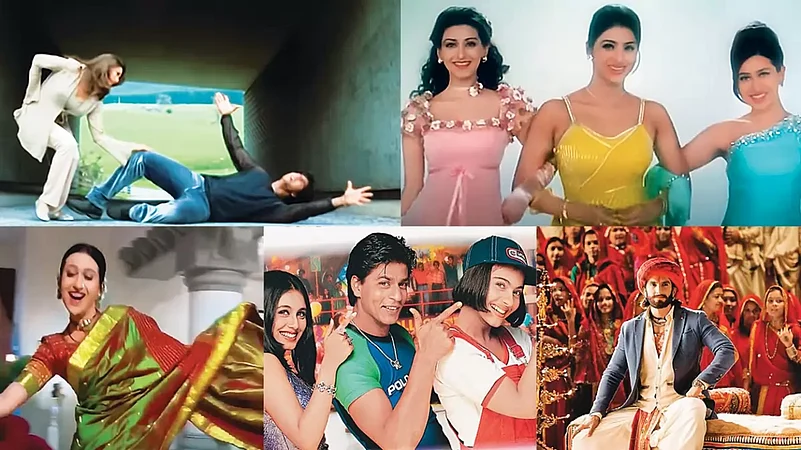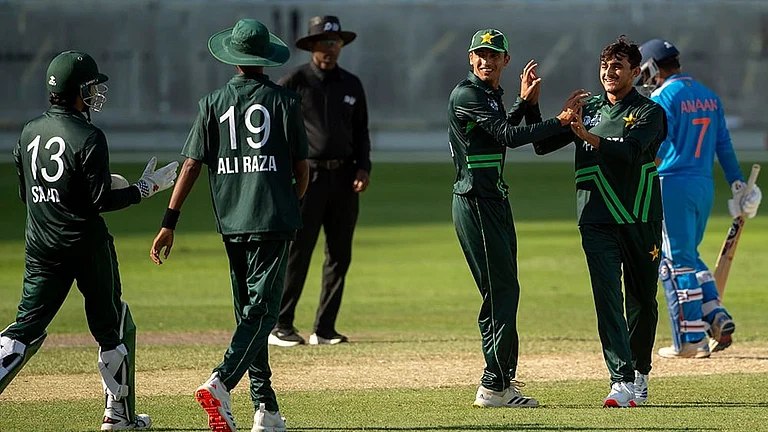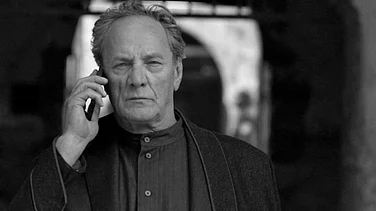It has been a little over 20 years since I began research into the less-noted domains of commercial Hindi filmmaking. I have visited film sets and locations in the middle of the night, seen them built inside cavernous studios where the ceiling disappears in an even murkier darkness. Some interviews lasted for hours, away from the set and its ever-present commotion.
I remember sitting in a sunny living room in Goregaon with the head dressman, whose home it was, seated across from me and my assistant, the window at his back shaded by trees. After the more formal parts of the interview, he warmed to a theme of struggles between crew and producers, crew and actors. Stories of delayed payment or non-existent payment were, by this point, very familiar to us. To these were now added accounts of arguments, fights, complaints about how all work was done too fast these days, how ready-made clothing was taking over, and how stars protected not just their own interests but those of their own people’s too —“If I’ll do Shah Rukh Khan’s spot boy’s work,” another head dressman had said, “I’ll do better than I do now.” These became the themes that repeatedly threaded my work.
The dressdada, the dressman, has occupied a key position in filmmaking for decades. The head dressmen in my interviews from 2002 saw themselves in a role complementary to that of the designers. When the designers had finished their job—and there were usually several of them, one for each star or leading character actor—the costumes came to the set, where they passed into the hands of the dressman. From this point forward, the dressman packed and unpacked them, maintained them, aged and distressed them if need be, and logged them alongside accessories. When the day’s shooting was about to begin, the dressman would take the costumes out of their trunks, press them and take them to the actor, quietly and discreetly placing them on a hook or nail in their dressing room or trailer, and equally discreetly coming later to retrieve them.
But over the next decade, a new layer of personnel began appearing on sets, assistants to the designer, deputed to follow the costumes on the designer’s behalf on the set. At times, the designer was there too, in a shift from the days when the designer considered their job done upon delivery. I interpreted this as the emergence of a unified department to replace the system of responsibility divided between designer and dressman. For their part, designers said that this was a positive development.
Dressmen’s own feelings on the matter were mixed. They would say that they appreciated the help that the designer’s assistants provided but it was clear that they thought their own prerogatives were being undermined. Dressmen had once not just managed the costumes during the shoot but tailored and sourced them as well. Some of the older men remembered being asked to drape dhotis or tie pagdis in a variety of styles. A few veterans talked about how they single-handedly prevented use of an incorrect police or military uniform.
Younger ones were sure to say that they could be relied upon to track down tailors to make last minute outfits, or that they would willingly trawl markets for fabrics and accessories. Still others enjoyed relating stories of subversive thrift, swapping marketplace t-shirts for designer t-shirts when the producer hinted that they do so, as “who would know if it was Gabbana’s or someone else’s?” Now a dressman was becoming what would in Hollywood be termed an on-set costumer, an important, even indispensable role but a very focused one, omitting some of the tasks dressmen have taken on over the years.
My perceptive and resourceful research assistant, Monalisa Sata, greatly aided my ventures into unfamiliar territories. Only with her help could I engage with film workers who spoke Gujarati and Marathi, as well as those whose Hindi did not jibe well with my resolutely formal training in the language. The foment of languages in filmmaking, glossed over by the ubiquity of English in the upper levels of the film hierarchy, warrants more attention than it has received.
There are few to no English speakers among the dressmen and members of the construction crew whose work I began to investigate in 2015. But even I could discern the shrewdness and penetrating insight in what they had to say. The eloquence in particular stood out to me, like the tailor who described spending hours examining an image of a dress to work out how to convert it into a two-dimensional pattern. Or later, when a backdrop painter explained that he imagined the rhythm and direction of the wind before he painted clouds. In a recent conversation, Mona reminded me about the dressmen who prided themselves on their knowledge of regional dress styles, and how “a dacoit will wear a dhoti differently from a politician.” That in turn set me thinking about visiting Suresh Dresswala in town, whose Marathi-speaking proprietor told us about their history as specialists in supplying turbans of all kinds. His family had themselves been expert in tying pagdis but the stock now was ready-tied, a time-saving innovation that seemed to me to be as notable as the zip-on sari.

To date, there hasn’t been much attention paid in popular or academic literature to film workers like these, still less to the many tasks that follow on from the creative decisions of directors, producers and actors. A film is striking among other art forms in that so many of the people that make it possible are credited before and after it is shown. Yet the discrepancy between rewards at the sunny tops of the production tree and at the shadowy base is stark.
It’s not that the need of a good crew is lost on the higher-ups. Everyone appreciates someone who is good at their job, be that the production designer or the costume designer, or the mistri, the dressman, the tailor, the hairdresser and the painter (and countless others). But the work is hard, the hours long, and, time and again, I was told, by almost everyone, that failing to do one’s job not only hurts the film, it hurts one’s prospects of work in the future. “This industry runs on fear,” was the blunt assessment of late costume designer, Mani Rabadi, before going on to say the oft-repeated mantra: “You have to say yes, you have to deliver.”
Most of my work as an anthropologist involves participating, observing and listening. But there is a richer sensory dimension to this work that is inescapable. The interviews, for example, have been conducted in vastly different conditions, some of them in the relative quiet of a home, others in dusty spare rooms inside film studios, yet others amid the chatter and clattering cups in a coffee shop or at the side of a studio floor, harried by the sounds of hammering and sawing.
Sets under construction reek of glue and paint and echo with the sounds of raised voices, the thud of planks being unloaded and the creaky whirring of fans. The air shimmers with sawdust under the harsh glare of lights. In tailoring shops, treadle and electric machines whirr in dense mechanical conversations. Amid the trailers and storerooms of a set in use, there is the creaky opening and the slamming of trunks, the steam rising off the vat of chai, the whoosh of the clothes steamer or the iron. All of this, too, is not often written about but are fundamental parts of the film’s making —its sensorium—as deeply familiar to film practitioners as it was novel to me.
Finished films, of course, strip this all away, all the extraneous bits obscured or edited out, tossed aside and forgotten. It is extraordinary, as anthropologist Chihab El Khachab has argued in his work on Egyptian filmmaking, to think of the accumulation of day-to-day work, some of it done at a fever pitch of intensity, routinely erased from the films we see on our screens. As an anthropologist, I was drawn to examine all the facets of costume production and later production design. Now, having studied designers, assistants, hairdressers, craftspeople and crew, I would argue that there are different kinds of value throughout the film world, all of them essential, even if they come in different currencies. Each practitioner is, in his or her own way, a co-author of the finished product. Truly comprehending film workers and how their efforts mesh with the designs and intentions of others in the filmmaking process, is a vital area for research, research that must also take stock of recent, enormous changes both in the industry and in India at large.
(This appeared in the print edition as "Ghost Writers Of The Film Text")
(Views expressed are personal)
Clare Wilkinson is associate professor of anthropology at washington state university, vancouver. she is author of fashioning bollywood: the making and meaning of hindi film costume





















